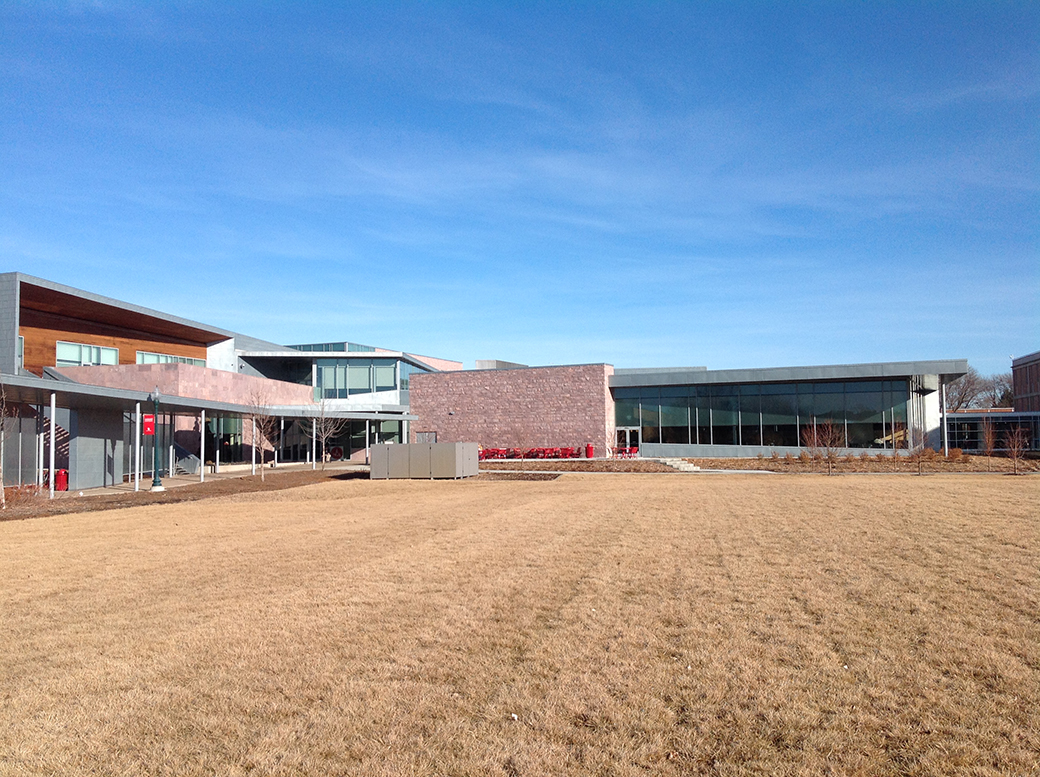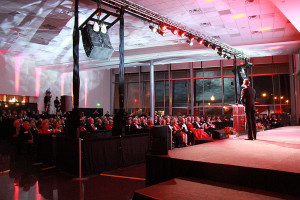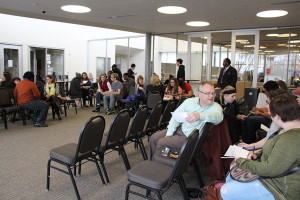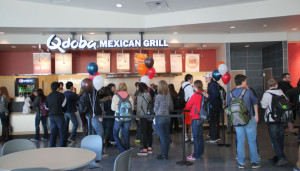
MUC expansion: One year in review
More than a year later and the expanded Muenster University Center is finally at a point of completion when it comes to matters of construction and office relocation.
The building now boasts 100,000 square feet for student dining, meeting space and staff offices. No immediate plans for changes in the renovated space are planned, said Kim Grieve, vice president of Student Services and dean of students.
Students had access to the expansion Jan. 13, 2014, but in the year since its opening, the MUC has been in a state of metamorphosis — from hosting a lavish red-tie alumni event during the 100th Dakota Days to providing a space for the recently opened Center for Diversity and Community.
The following takes a look at the major events to mark the year in transition since the MUC expansion opened and what is expected from the space in the future.
To see a virtual tour of the MUC expansion, click here.
Making the MUC a hub for students, alumni

Looking around the MUC during mealtime is one way to witness the shift of South Dakota’s flagship university finally mirroring its Division I counterpoints.
Students can be seen chowing down on a Chick-fil-A sandwich or a naked burrito from Qdoba Mexican Grill — an ode to the three national franchises that are open on the Vermillion campus.
Along with the additional eateries is the added number of seating options, which administrators such as Grieve say are promoting meals as a time of community for the university.
“The most surprising thing about the expansion is since there are so many students in one place for lunchtime, its seems like they participate more in other USD activities, too,” Grieve said. “It’s brought a much tighter sense of community to the university.”
And by sheer size, the MUC can hold the growing mass of students that wander there. The building can accommodate 1,200 students, more than doubling the previous 450-person capacity.
The new space, which cost about $10 million to construct, has also acted more than a dining and study space in the past year. On Oct. 10, the MUC was transformed into a massive gala of red — cleared of all remnants that indicate hundreds of students pass through the building on a daily basis.
More than 600 people attended the University of South Dakota’s Red Tie Event during Dakota Days last year. The evening marked the public launch of USD’s Onward campaign, which the Alumni Association announced they raised more than $135 million of their $250 million goal.
Chandeliers, spotlights and grandiose decorations of red illuminated the building as speakers at the event included notable USD graduates such as President James Abbott, South Dakota Gov. Dennis Daugaard and Broadway star Cody Strand.
The effect of relocation

Some students are not just using the new expansion to diminish their flex accounts. Student Government Association senator Jim Gulbranson said the change of SGA’s office to the first floor has ushered it onto the next level of student engagement.
“It wasn’t a matter of people not venturing upstairs in the MUC to come to the office, but now, it’s more about the fact that people can see us right as they walk in the door,” Gulbranson said. “It helps us remind students we’re here representing their interests.”
Gulbranson, a senior, said aside from the increased foot traffic, the new office location creates a more open and professional feeling between senators and students.
While SGA moved downstairs in the MUC, Student Services were also relocated to the first floor, while its former suite became the Center for Diversity and Community. The center officially opened its doors Nov. 5.
After two years of planning, the name and director were finally selected for the multicultural center project, which was created with the purpose to strengthen diversity and inclusiveness at USD.
The center’s director, Lamont Sellers, who has worked in diversity and multicultural affairs for about 15 years, said he didn’t want multicultural to be in the name, so it was more inclusive for the whole student body, not just minority groups.
“We definitely wanted students to have a choice in it because it is a student center,” Sellers said.
The center has played host to a number of events since its opening, including a “chocolate break” during finals week in December and numerous discussions to talk about relevant national events, such as the grand jury decision in Ferguson, Mo.
“Even though this might not be the activist campus that you’d see at a larger institution, it doesn’t mean people don’t pay attention to the news or that these conversations aren’t happening,” Sellers said.
Future expenses

The relocation of offices and re-designation of space is at an end in the MUC, but the university is still in the process of paying off the expansion. With a price tag of about $10 million, the cost was financed internally, said Jessica Preister, director of internal audit in financial services.
“The MUC expansion was paid for with cash on hand,” Preister said. “The plan utilized dollars that had been set aside in the Replace, Renovate, and Repair account for the student union as well as borrowing RRR funds from residential life and the Wellness Center.”
The plan included a payback schedule for replenishing the RRR accounts for the Wellness Center and residence halls. This payment plan is scheduled to go on until fiscal year 2023.


